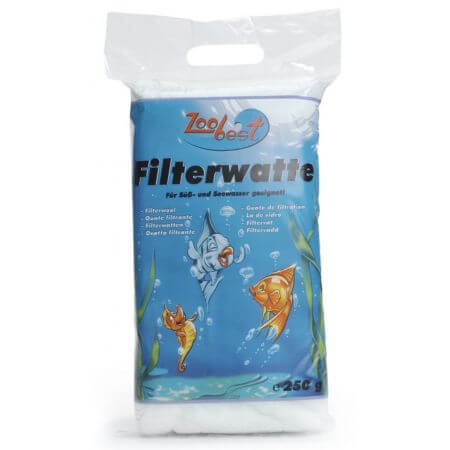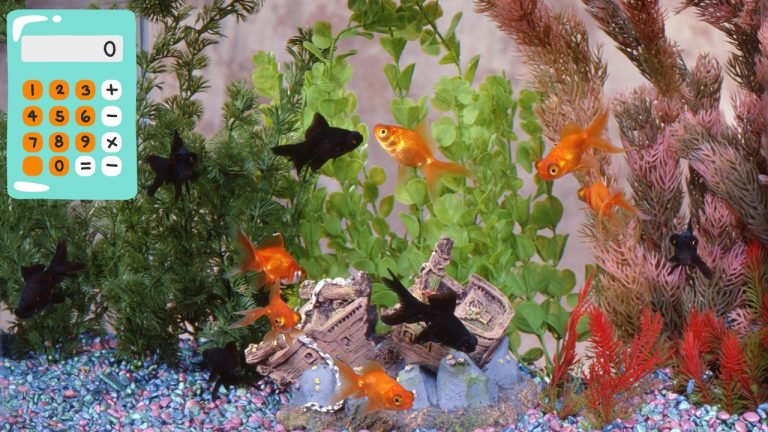Master the Art of Attaching Aquarium Plants to Rocks
Attaching aquarium plants to rocks can be done by using fishing line or super glue. For fishing line, wrap the line tightly around the plant’s base and the rock, making sure it is secured.
For super glue, apply a small amount to the rock and quickly attach the plant. Aquarium plants not only beautify the aquarium but also provide essential oxygen for the fish. However, keeping these plants in place can be a challenging task.
Attaching them to rocks is one of the best ways to keep them secure. It not only ensures their stability but also adds an aesthetic touch to the aquarium. There are two methods of attaching aquarium plants to rocks: using fishing line or super glue. Both methods are easy to follow and can be done quickly with little effort. In this article, we will discuss these methods in detail and provide step-by-step instructions on how to attach aquarium plants to rocks.
:max_bytes(150000):strip_icc()/anubias-aquatic-plant-in-an-aquarium--anubias-nana-1254563939-e1bdf4b735f04e1eab45f3d320fe7c69.jpg)
Credit: www.treehugger.com
Understanding The Importance Of Attaching Aquarium Plants To Rocks
Aquarium plants are a common feature in most aquariums, and just like any other living thing, they require specific nutrients and conditions to grow and thrive, one of which is proper anchorage. Attaching aquarium plants to rocks is one of the best ways to meet this requirement.
So let’s explore why it’s essential to attach aquarium plants to rocks.
Benefits Of Attaching Aquarium Plants To Rocks
Here are some of the vital benefits of attaching your aquarium plants to rocks:
- Enhanced natural look: Adding rocks to your aquarium can enhance its natural appearance, especially when the plants on the rocks thrive. It creates an illusion of an underwater habitat where aquatic creatures and plants coexist.
- Improved root system: When you attach aquarium plants to rocks, their roots grow and spread through the rocks. This anchorage system improves the plants’ overall health and keeps them from floating around the aquarium.
- Better anchor for plants: Rocks serve as a better anchor for plants than any other alternative. They are more aesthetically pleasing and more durable than plastic anchors, which can break down and harm aquatic life.
- Algae prevention: When plant roots attach to rocks, there is less chance of algae growth, as the algae have less room to grow. It also helps improve water quality and reduces the amount of maintenance required to keep the aquarium in top shape.
Overall, attaching aquarium plants to rocks is an easy and rewarding practice for aquarium enthusiasts. It enhances the natural look of the aquarium, helps plants thrive, acts as a better anchor for plants, and reduces the growth of algae. So, make sure you attach your aquarium plants to rocks to improve your aquarium’s health and aesthetic.
Selecting The Right Aquarium Plants And Rocks
Choosing The Right Aquatic Plants For Attachment To Rocks
Aquarium plants play a critical role in creating an aesthetically pleasing and healthy environment for fish. However, selecting and attaching these plants to rocks can be challenging for beginners. Here are some essential tips for choosing the right aquatic plants for attachment to rocks:
- Criteria for selecting the right plants: Look for plants that are hardy, adaptable to different water conditions, and grow robustly. Avoid plants that shed their leaves readily, have long roots, or require deep substrate.
- Compatible characteristics: Choose aquatic plants that suit your aquarium’s light levels, temperature, and ph levels. Some popular choices include anubias barteri, java fern, and java moss.
- Planting techniques: Avoid planting the plants directly on the rock as they may end up falling off. Instead, use thread, fishing line, or glue to attach the plants to the rock’s surface. This method is beneficial, especially for mosses and ferns.
Selecting The Right Rocks For Attachment
Once you know which aquatic plants to use, you need to pick the appropriate rocks that go with them. Here’s what you need to focus on:
- Type of rocks to use: While many types of rocks can be used, avoid using those that could raise the water’s hardness, pose a potential risk to your aquarium inhabitants, or leech toxins into the water. Suitable choices include slate, lava rock, and dragon stone.
- Size and shape of rocks: Use rocks of different sizes and shapes to create natural-looking arrangements. Larger rocks towards the back and sides, gradually decreasing in size towards the front of the tank, give an excellent composition for smaller plants.
- Preparation of rocks for planting: Before attaching the rocks, scrub them thoroughly with a brush and rinse them clean. You can also boil or bake the rocks to sterilize them. The preparation ensures that there is no dirt, debris, or other unwanted matter left on the rock’s surface, ensuring proper attachment.
Selecting the right rocks and aquatic plants and attaching them appropriately provides the foundation of a stunning aquarium landscape that fish can enjoy. Follow the tips illustrated above, and you will succeed in creating an aquascape that’s both beautiful and healthy.
Essential Tools And Materials For Attaching Aquarium Plants To Rocks
Aquarium plants not only make your aquarium look good but also contribute to the overall wellbeing of your aquatic pets. However, it is essential to attach these plants to rocks to prevent them from floating around. In this blog post, we will discuss the necessary tools and materials needed to attach aquarium plants to rocks.
Essential Tools
To attach aquarium plants to rocks, you will need the following tools:
- Scissors: To trim the plants to the desired length and shape.
- Tweezers: To hold and place the plants precisely where you want them.
- Forceps: To hold the plant in place while it sets.
- Razor blade: To gently scrape off any extra glue or cotton threads and to create cuts on the rocks for tying the plants.
- Plant weight: To keep the plants from floating away.
Necessary Materials
Apart from the tools mentioned above, you will need the following materials to attach aquarium plants to rocks:
- Fishing line: To tie the plants to the rocks. The fishing line should be sturdy enough to hold the weight of the plant.
- Silicone glue: To glue the plants to the rocks. Make sure you use aquarium-grade silicone glue as it is safe for your aquatic pets.
- Cotton thread: To tie the plants to the rocks. The cotton thread should be free of any dyes or chemicals that may be harmful to your aquatic pets.
- Suction cups: To hold the plants in place against the glass walls for ease of attachment.
Attaching aquarium plants to rocks is a simple process that requires a few essential tools and materials. With the help of these tools and materials, you can create a beautiful aquascape for your aquatic pets to enjoy.
Step-By-Step Guide To Attaching Aquarium Plants To Rocks
Preparation And Planning:
Before attaching aquarium plants to rocks, it is necessary to prepare the materials and plan accordingly. Follow these steps to make the process easier:
- Make sure that you have all the necessary materials, such as cotton thread, fishing line, silicone glue, plant weights, and rocks.
- Choose the right plants that can grow well on rocks, such as anubias, java fern, and christmas moss.
- Plan the placement of the rocks in the aquarium to create a natural environment for the plants and fish.
- Determine the number of plants you want to attach to each rock.
Cleaning The Rocks And Plants:
To ensure that the plants attach properly to the rocks, it is essential to clean them thoroughly. Follow these steps to clean the rocks and plants:
- Soak the rocks in clean water for a few hours to remove any dirt or debris.
- Brush the rocks gently to remove any algae or other organic matter.
- Rinse the rocks several times to ensure that they are completely clean.
- Trim the aquarium plants and remove any dead leaves or roots.
- Rinse the plants in clean water to remove any dirt or debris.
Identifying Attachment Points:
It is important to identify the best attachment points for each plant on the rocks. Follow these steps to identify the attachment points:
- Look for crevices or holes in the rocks where the roots of the plants can anchor.
- Check for flat surfaces where you can attach the plants using glue or plant weights.
- Consider the size and shape of the leaves of the plants when identifying the attachment points.
Developing An Attachment Plan:
Once you have identified the attachment points, it’s time to develop a plan for attaching the plants to the rocks. Follow these steps to develop a plan:
- Decide on the attachment method that you want to use, such as cotton thread, fishing line, silicone glue, or plant weights.
- Plan the sequence of attachment for each rock and plant.
- Allow enough time to attach all the plants carefully.
Plant Attachment Techniques:
There are several methods for attaching aquarium plants to rocks. Here are some of the most common techniques:
- Using cotton thread: Tie the plants to the rocks using cotton thread, making sure not to damage the leaves or stems.
- Using fishing line: Wrap the fishing line around the rocks and plants to anchor them firmly.
- Using silicone glue: Apply a small amount of silicone glue to the attachment points and hold the plants in place until the glue dries.
- Using plant weights: Attach small plant weights to the stems of the plants to anchor them to the rocks.
Plant Positioning And Maintenance:
Correct positioning of plants on rocks and maintenance techniques play a significant role in keeping the plants healthy. Here are some tips to make sure that your plants grow well:
- Position the plants to receive the right amount of light and water.
- Make sure that the plants have enough room to grow and spread out.
- Periodically check the plants for any dead leaves or decaying matter.
- Fertilize the plants regularly to provide them with necessary nutrients.
By following these step-by-step guides, you will be able to attach aquarium plants to rocks seamlessly. The positioning and maintenance of plants are equally important to ensure that they grow well and beautify your aquarium. Happy planting!
Frequently Asked Questions Of How To Attach Aquarium Plants To Rocks
How Do I Attach Aquarium Plants To Rocks?
To attach aquarium plants to rocks, you can use fishing line or silicone glue. Wrap fishing line around the plant and rock or use silicone glue to attach the plant to the rock.
What Are The Benefits Of Attaching Plants To Rocks?
Attaching plants to rocks gives them a stable anchor, which makes them less likely to uproot and float around the tank. It also provides a natural hiding place for your fish.
Can I Attach Any Type Of Plant To A Rock?
Most species of aquarium plants can be attached to rocks. Ensure the plant you are attaching is compatible with the water parameters in your tank and can grow on hard surfaces.
How Do I Clean The Plants And Rocks After Attachment?
Use a soft brush to gently remove any debris from the plants and rocks after attachment. You can also rinse them with water. Avoid using soap or chemicals that could harm your aquatic life.
Conclusion
Overall, attaching aquarium plants to rocks is not a difficult task if you follow the right steps. The key to success is ensuring that the plants are secure and stable enough to remain in place and thrive. Remember to choose the right rock for the type of plant, clean the rock before attaching the plant, apply the adhesive in small amounts, and give the plant time to take root before placing it in the aquarium.
By following these steps, you can create a beautiful and natural-looking aquarium that is both visually appealing and healthy for your aquatic fauna. So go ahead, try it out, and enjoy the benefits of a lush and beautiful planted aquarium.






